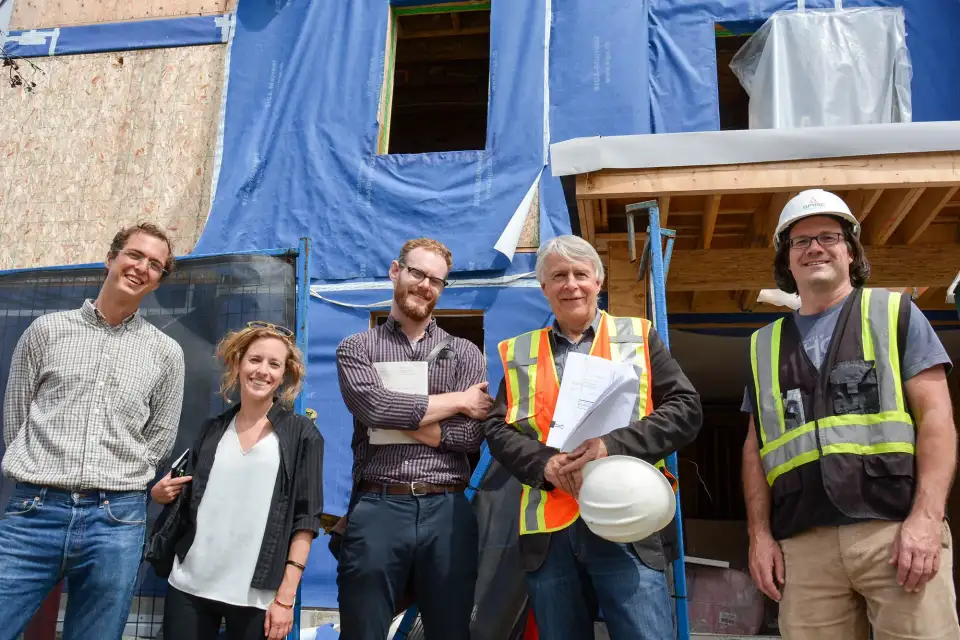
In 2017, British Columbia introduced the B.C. Energy Step Code—what might be North America’s most innovative beyond-code standard for energy efficiency. The B.C. Energy Step Code is an opt-in regulation that enables local governments to pursue improved levels of performance for new homes and buildings. The code allows cities and towns in B.C. to require or incentivize one of five levels of improved building performance, from current code performance all the way to net zero energy ready.
The Pan-Canadian Framework on Clean Growth and Climate Change, Canada’s buildings strategy, and the B.C. Climate Leadership Plan have set targets for all new buildings to meet net zero energy ready standards by 2030 or 2032. B.C.’s Energy Step Code is the first provincial road map to achieving this goal, providing much-needed clarity to the industry and to authorities having jurisdiction. The code is performance based, with compliance assessed through energy-modeling software and on-site testing, simplifying the permitting process while also ensuring design flexibility.
Local Governments Step Up
As of July 2018, 28 municipalities in B.C. have signaled their intent to use the Energy Step Code—together accounting for over half of the province’s population. (The city of Vancouver has already taken measures to incentivize steps to net zero energy ready buildings—see “Vancouver Strides Toward Zero Emissions.” The city has committed to creating equivalencies between its building bylaws and the Energy Step Code.) As each municipality considers its options for incentivizing or requiring higher building performance, the question arises, What step should be first?
An extensive costing study, completed in 2017, offers some insight. It costed thousands of simulations for ten archetypes, representing a range of possible design choices that could comply with each performance step in the six climate zones of B.C. A first of its kind in Canada, this study revealed that significant reductions in energy use, carbon pollution, and utility costs already can be achieved at very moderate additional construction costs for the first three steps. For example, the lowest capital cost designs meeting step 3 for homes and apartment buildings in most parts of the province result in at least 20% energy savings and 50% emissions reductions (in some cases up to 90%), for less than 2% incremental construction costs. The designs needed to meet these performance criteria are familiar to the industry, which already regularly builds to this level under a series of voluntary programs.
Given the existence of low-cost solutions and the market’s readiness, many local governments are opting to adopt step 3, either as a requirement or as a minimum threshold for access to added density or other incentives. Metro Vancouver’s three North Shore municipalities, for example, have been requiring step 3 for new low- and midrise residential buildings since last July. Burnaby, New Westminster, and Surrey are also considering requiring or incentivizing step 3 for residential buildings.
The potential carbon pollution reductions from adopting step 3 are significant— and make a strong case for dispensing with the first two steps in many areas. For single-family homes, for example, the marginal cost for builders and consumers of moving from step 2 to step 3 is about a 1% increase in capital costs. Going up the step decreases emissions by another 20% to 25% below base code while maintaining energy costs at the same level. If all of the major municipalities in Metro Vancouver adopted step 3 for residential buildings, over one million tonnes of carbon pollution would be avoided cumulatively between 2018 and 2030.
Stepping Out Beyond B.C.
Such innovation need not be limited to B.C. Developing a multitiered framework in other Canadian provinces would allow municipalities to start building the industry capacity and experience required to smoothly transition to net zero energy ready construction.
All around the country, energy-efficient buildings are being built and recognized for the multiple benefits they provide, including better air quality, reduced mold and moisture, and lower energy costs. A national energy step code could help accelerate this market transformation. Why wait?